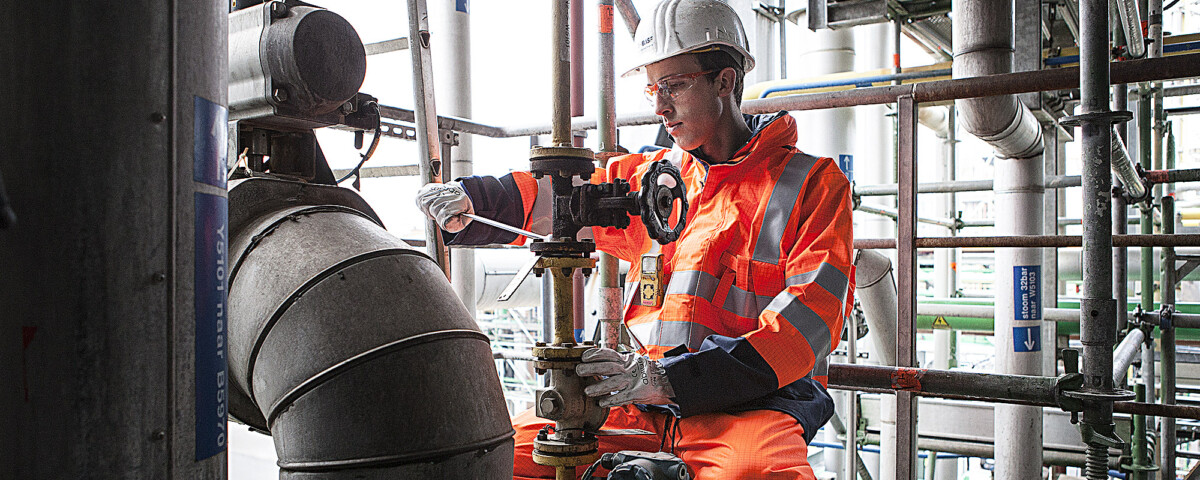No products in the basket.
Arc Flash Clothing, Clad News, Health & Safety, PPE, Safety Footwear, Workwear
Anti-Static Explained
Anti-static workwear is a specialized type of protective clothing designed to reduce the risk of static electricity buildup and discharge. It is an essential component of personal protective equipment (PPE) for individuals working in industries where static electricity poses a significant hazard. The primary purpose of anti-static clothing and PPE is to dissipate any static electrical charges that may accumulate on the body while performing tasks. It consists of specially designed fabrics that have conductive fibers woven into them, allowing any static charge to be safely discharged through the fabric and into the ground. This prevents the build-up and accumulation of static electricity.
What is static charge?
Static charge can be described as an electrical imbalance on the surface of a material, where the electric charge can be either positive or negative. When two items touch, like a balloon and your hair, electrons can move between them, causing them both to become positively or negatively charged. A static build-up can pose several risks and dangers. Firstly, it can cause unexpected electrical shocks, which range from mildly uncomfortable to potentially dangerous depending on the voltage involved. These shocks can not only startle individuals but also potentially interfere with critical tasks or machinery operation. In industries where flammable substances or explosive atmospheres are present, static charge buildup can also pose a significant fire hazard. A spark from a static discharge can ignite flammable gases or vapors, leading to explosions or fires. This is particularly dangerous in environments such as oil refineries, chemical plants, and manufacturing facilities.
What is electrostatic discharge?
Electrostatic discharge (ESD) is a sudden flow of electricity between two electrically charged objects caused by contact, an electrical short, or dielectric breakdown. This discharge can cause damage to electronic devices, circuit boards, and sensitive components, and it can potentially pose a danger to individuals working with or around electrical equipment. Even a small discharge of static electricity can cause microscopic damage to the components, leading to malfunctions or failures in the devices they are used in.
Which professions require anti-static PPE?
 Anti-static workwear and PPE is essential for workers in hazardous environments where there is a risk of static electricity causing damage to sensitive electronic equipment or posing a risk of explosion in flammable environments.
Anti-static workwear and PPE is essential for workers in hazardous environments where there is a risk of static electricity causing damage to sensitive electronic equipment or posing a risk of explosion in flammable environments.
One profession that requires anti-static PPE is in the electronics industry. Workers in this field handle delicate electronic components and devices that are sensitive to static electricity. Another profession that requires anti-static PPE is in the manufacturing of flammable materials or in environments where flammable gases are present. Static electricity can create a spark that could ignite flammable materials, leading to a potentially catastrophic explosion. Professions that involve working with explosive devices, such as munitions handling or pyrotechnics, also require anti-static PPE. The presence of static electricity in these environments can pose a serious risk of accidental detonation, making it crucial for workers to utilize anti-static gear to reduce the likelihood of a static discharge. Therefore, anyone working in explosive or electrically sensitive environments must have the right anti-static gear to protect themselves from these risks.
What types of anti-static PPE are available?
There are several types of anti-static PPE available to provide protection against static electricity build-up and discharge. One essential piece of anti-static PPE is the coverall. These coveralls are made from specially designed fabrics that have conductive fibers woven into them. The conductive fibers allow any static charge to be safely discharged through the fabric, preventing the accumulation of static electricity on the body. Gloves are another crucial component of anti-static PPE. These gloves are typically made from materials such as carbon fiber or latex with conductive properties. They provide a barrier between the hands and any static electricity sources, reducing the risk of an electrostatic discharge. Gloves also help prevent contamination from oils, dirt, and other substances that could affect the performance of electronic components. In addition to coveralls and gloves, anti-static footwear is also available. These shoes are made with conductive materials or have conductive soles, allowing any static charge to be safely discharged through the ground. This helps prevent the build-up of static electricity on the body and reduces the risk of electrostatic discharge.
However, anti-static PPE is not limited to what you can wear. Another type of anti-static PPE is the ESD mat. These mats are made from conductive materials and provide a safe surface for working with sensitive electronics. They can be placed on workbenches or floors to prevent the build-up of static electricity and protect the electronic devices from damage. Also, anti-static bags or packaging materials are also available. These bags are made with anti-static materials that prevent the accumulation of static electricity and protect sensitive electronic components during storage or transportation.
What is the safety standard relating to anti-static PPE?
The safety standard required for anti-static garments and PPE to meet is EN1149. This standard specifies the requirements for materials and garments that are designed to dissipate electrostatic charges in order to prevent static electricity build-up. EN1149 has different levels of protection, denoted by specific performance requirements. Level 1 indicates basic antistatic properties, while Level 2 offers additional protection against electrostatic discharges from the human body. Level 3 provides even higher levels of protection, including resistance to liquid chemicals and ignitable dust atmospheres.

Stringent testing must be carried out before a garment can be deemed as meeting the standard set out in EN1149. One common test performed on anti-static workwear is the surface resistance test. This test measures the resistance of the fabric or material to the flow of electric current. The lower the surface resistance, the more effective the workwear is in dissipating static charges. Testers use specialized equipment that applies a voltage to the fabric and measures the resulting current flow. Another important test is the charge decay test. This test evaluates how quickly any accumulated static charge on the material dissipates over time. A higher rate of charge decay indicates better anti-static properties. Testers apply a charge to the material and measure the time it takes for the charge to dissipate. The safety standard also requires testing for flame resistance, as static electricity can potentially ignite flammable substances. Flame resistance tests assess the fabric or material’s ability to resist ignition and spread of flames.
Where can I buy anti-static clothing and PPE?
At Clad, we stock products from a number of leading brands in this industry, such as Tranemo, Pulsar, ProGARM, Sioen and Portwest, who have become specialists in multi-norm protection. All products that are arc-flash are also rated as anti-static, due to the similar nature of the testing involved. Head over to our product pages where you’ll find a wide range of products that meet the EN1149 safety standard. Alternatively, get in touch with one of our friendly team members today, to discuss your requirements.




